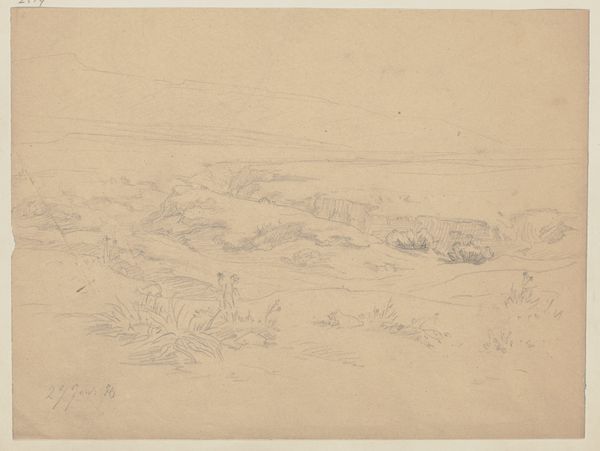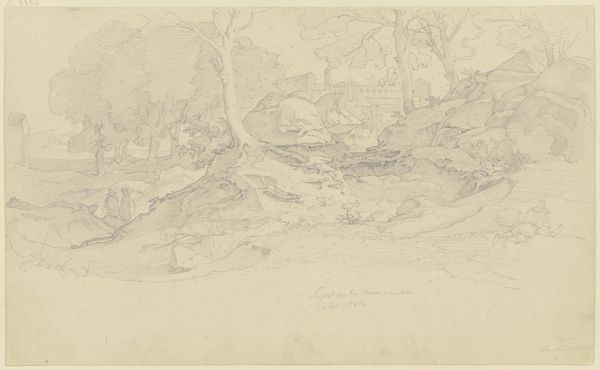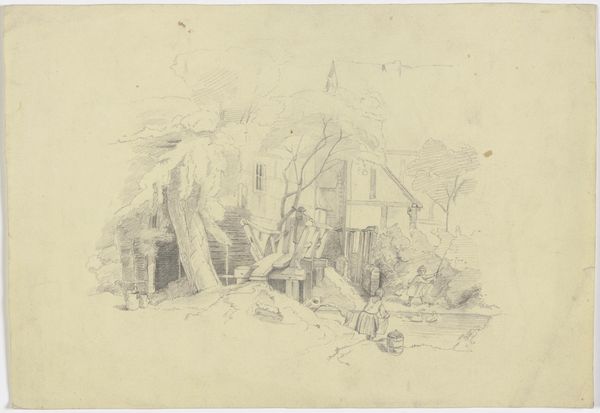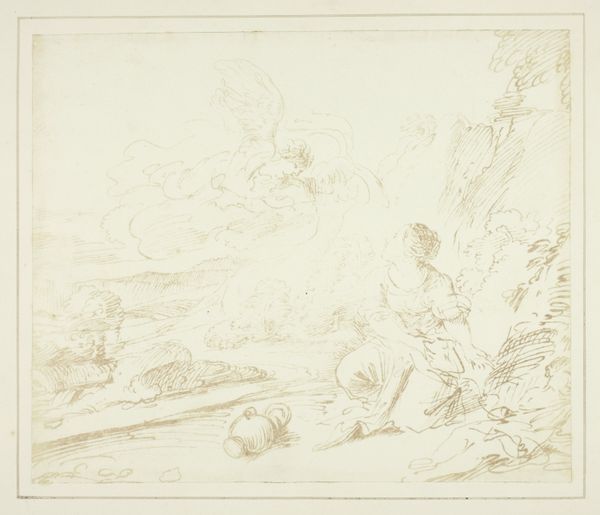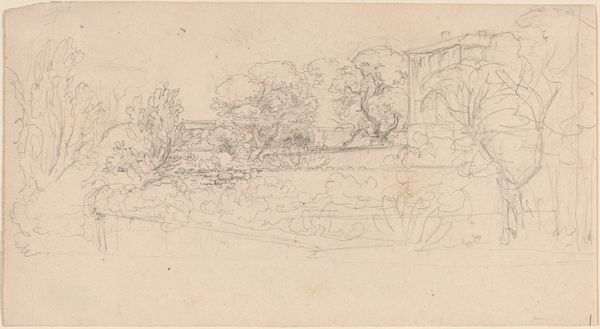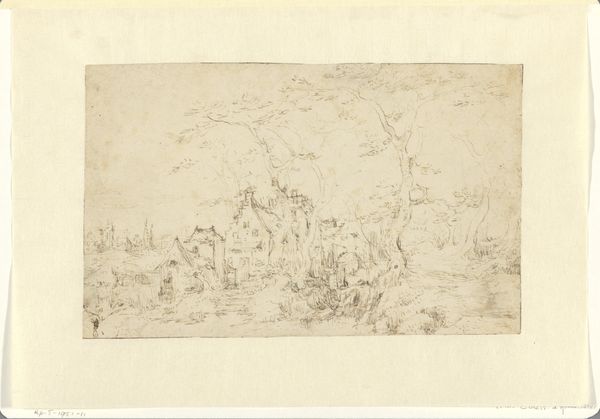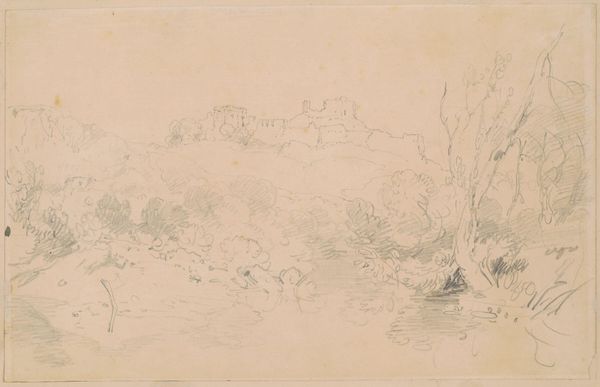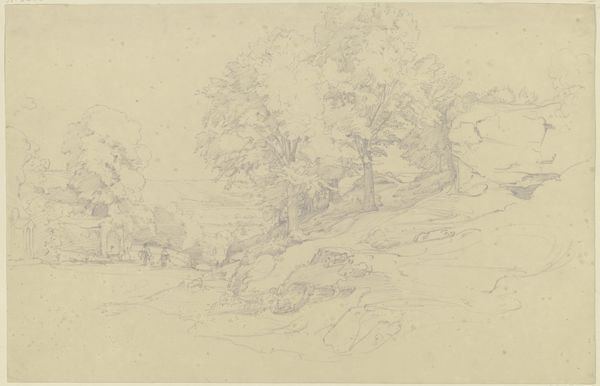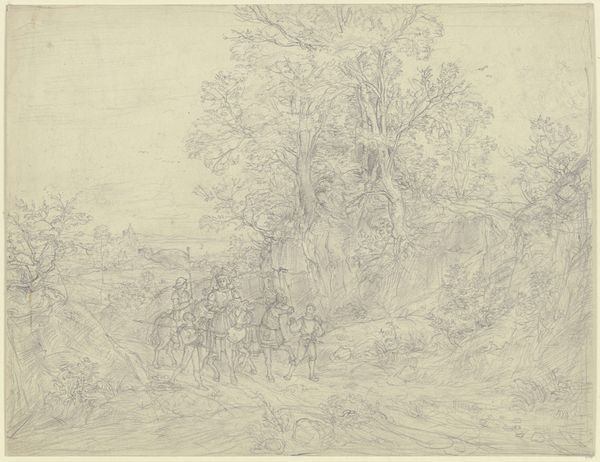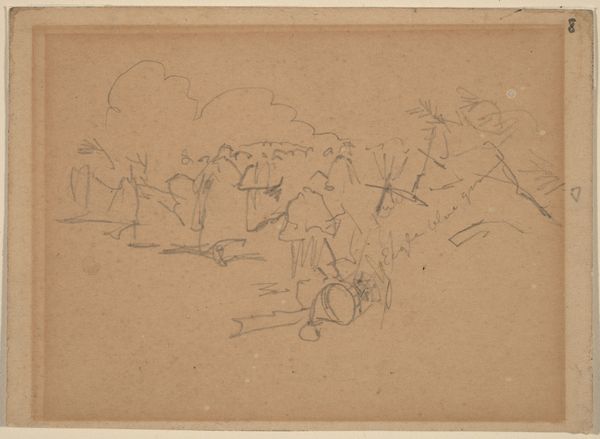
drawing, pencil
#
drawing
#
impressionism
#
landscape
#
pencil
#
genre-painting
#
realism
Dimensions: height 242 mm, width 357 mm
Copyright: Rijks Museum: Open Domain
Willem Maris made this sketch called 'Girl Feeding Geese and Ducks in a Farmyard' using graphite on paper. What I find most compelling about Maris' work is how he uses a humble material to capture a slice of rural life. The soft, grainy texture of the graphite lends itself well to the bucolic scene, creating a sense of atmosphere and light. You can almost feel the gentle breeze and hear the quacking of the ducks. Graphite, of course, is simply carbon. But in the hands of an artist like Maris, it becomes a powerful tool for expression. The choice of graphite also speaks to the changing social context of art production in the 19th century. Unlike the expensive pigments used by earlier generations of artists, graphite was relatively inexpensive and readily available. This made it possible for artists like Maris to create more accessible and democratic works of art that reflected the lives of ordinary people. Looking closely at the work Maris has created, we can appreciate how an ordinary material becomes a powerful tool for expressing a connection to the natural world, inviting us to reflect on the value we assign to both art and the everyday.
Comments
No comments
Be the first to comment and join the conversation on the ultimate creative platform.
